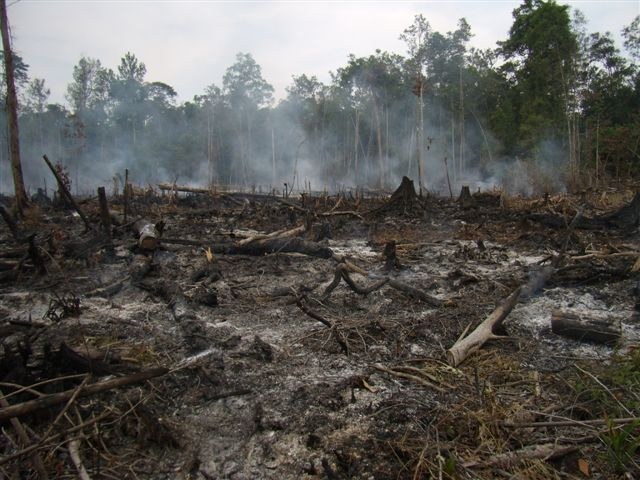Impacts on the Environment
Forest conversion
In order to meet the growing demand for palm oil, vast forest areas has been cleared to be converted to oil palm tree plantations. Oil palm tree only grows in tropical areas, and many tropical forests of high conservation value has been cleared for growing palm oil plantations.
Lost in Biodiversity
As tropical forests being cleared for the conversion to oil palm plantations, many wildlife habitats are destroyed, leading to a devastating impact on large populations of animals, including rare and endangered species. Many animals lose their homes and are forced to search for new places to live if they do survive. Furthermore, a great deal of valuable biodiversity is lost in the process. For instance, in Malaysia’s primary forests, around 80 mammal species can be found. However, disturbed forests only have about 30 mammal species, while palm oil plantations only have 11 or 12 (WWF, n.d.).

Orangutans in the haze shrouding the Borneo Orangutan Survival Foundation camp on Oct. 5. | Source: Antara Foto/Reuters

A tiger lost its home after forest clearing | Source: Unknown. (Found in a video titled ‘Habitat Loss/Destruction – A Humanitarian Mission’)
Air pollution
A common method used by farmers and plantation owners in clearing trees is slash and burn. When forests are burned down for land conversion to oil palm plantations, trees release large amounts of carbon into the atmosphere, polluting the air and contributing to global warming.
The burning of forests has many incidents of haze polluting the air, which is extremely harmful to the health of people. Indonesia and Malaysia have been identified as major contributors for air pollution in Southeast Asia from the burning of forests by farmers for oil palm plantations.

Smoke rises from burning areas of cleared forest land in Sumatra, Indonesia | Source: Indonesia Disaster Task Force

Swimmers look out at the haze as they swim in the rooftop pool at Marina Bay Sands on June 20, 2013 in Singapore. The Pollutant Standards Index (PSI) rose to the highest level on record reaching 371 at 1pm. The haze is created by deliberate slash-and-burn forest fires started by companies in neighbouring Sumatra | Source: Getty Images News, by Chris McGrath


